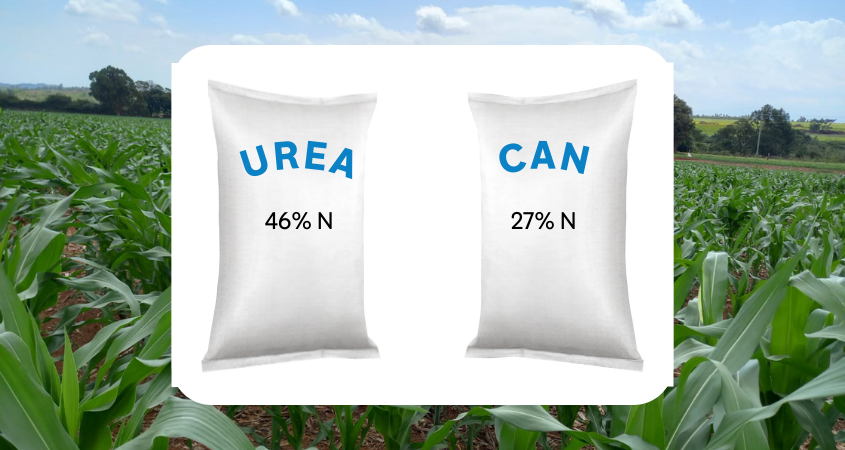
In the realm of top-dressing fertilizers, the choice between Urea and Calcium Ammonium Nitrate (CAN) is a decision that demands careful consideration. Let’s explore the advantages and disadvantages of each:
a) Cost-Efficiency: Urea often stands out as a cost-effective option, providing nitrogen at a relatively lower price. Has economic viability, especially for large-scale applications.
b) High Nitrogen Content: Urea boasts a higher nitrogen content (46%), ensuring a concentrated nutrient source. Efficient nutrient delivery means fewer applications are required.
c) Versatility: Urea can be used for various crops, showcasing its versatility across different agricultural contexts. This means simplified fertilizer management for farmers with diverse crops.
a) Volatilization Risk: Susceptible to nitrogen volatilization, especially in certain weather conditions. Farmers may experience potential nutrient loss if not managed carefully.
b) Acidifying Effect: Urea can contribute to soil acidification, affecting soil pH over time. Continuous use will require additional measures to counteract potential soil acidity issues.

a) Lower Volatilization Risk: CAN exhibits a lower nitrogen volatilization risk than Urea, especially in dry soils. Minimized nutrient loss enhances nutrient use efficiency.
b) Neutral Soil Impact: CAN has a neutral effect on soil acidity, making it a favorable choice for soil health. Has reduced concerns about soil pH imbalance.
c) Rapid Nutrient Uptake: CAN is rapidly and efficiently taken up by plants, ensuring timely nutrient delivery. Supports crops during critical growth stages.
a) Lower Nitrogen Content: CAN has a lower nitrogen content (~27%) compared to Urea. Requires larger quantities for equivalent nitrogen delivery, potentially offsetting initial cost advantages.
b) Higher Cost per Kg of Nitrogen: CAN can be more expensive per kilogram of nitrogen compared to Urea. Has higher overall cost, influencing budget considerations.
Consider:
a) Crop-specific Requirements: Assess the specific needs of the crop being cultivated.
b) Soil Conditions: Evaluate soil characteristics, baseline nutrient levels, and pH levels as guided by a soil analysis report.
c) Weather Patterns: Consider local weather conditions and the potential impact on volatilization.
While Urea and both have their merits and drawbacks, the CANchoice boils down to the unique requirements of each farming scenario. An understanding of the advantages and disadvantages, and a firm understanding of the soil characteristics through soil analysis, enable farmers to make informed decisions, aligning their top dressing choices with the precise needs of their crops and soil health.
Grow more with less
#savesoil #soilhealth #soilscience
Order our services and get to know how to improve your soil for better yeilds.